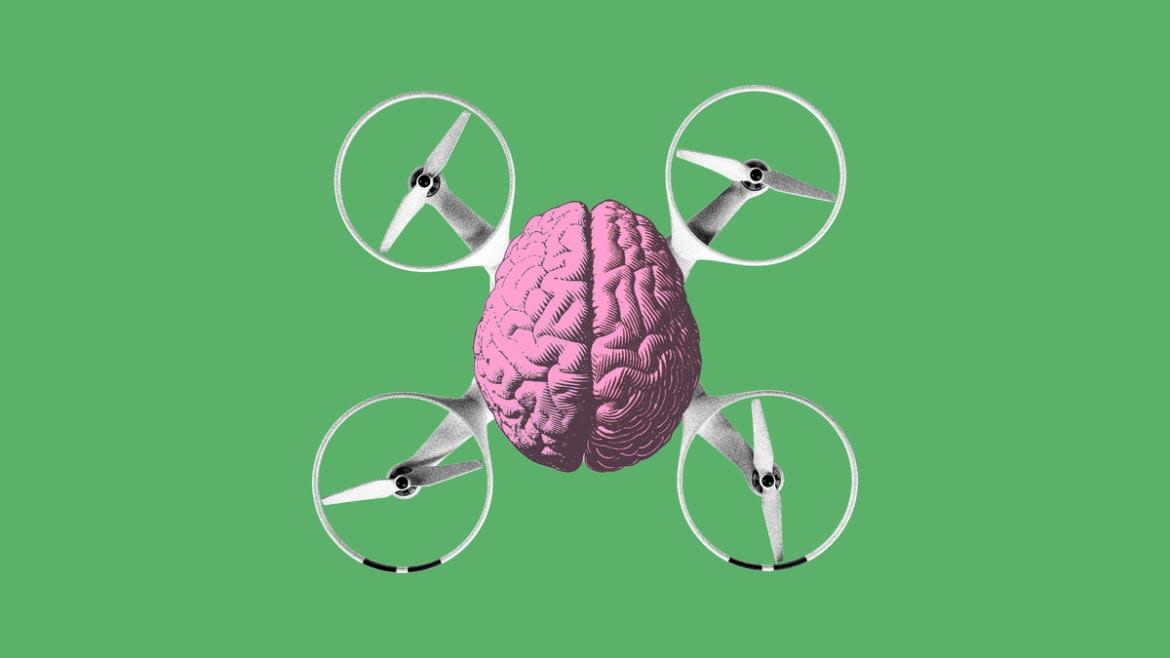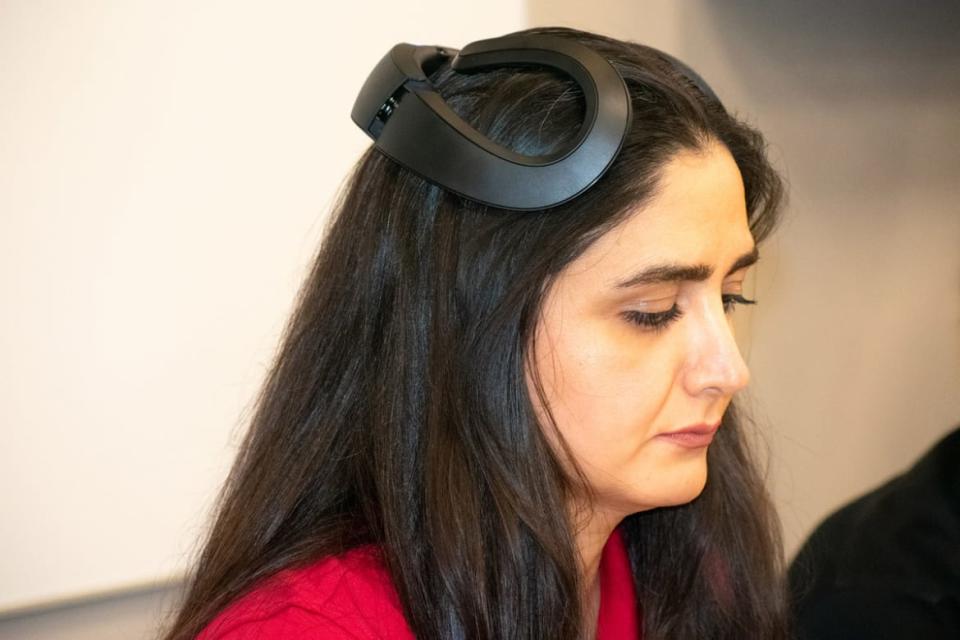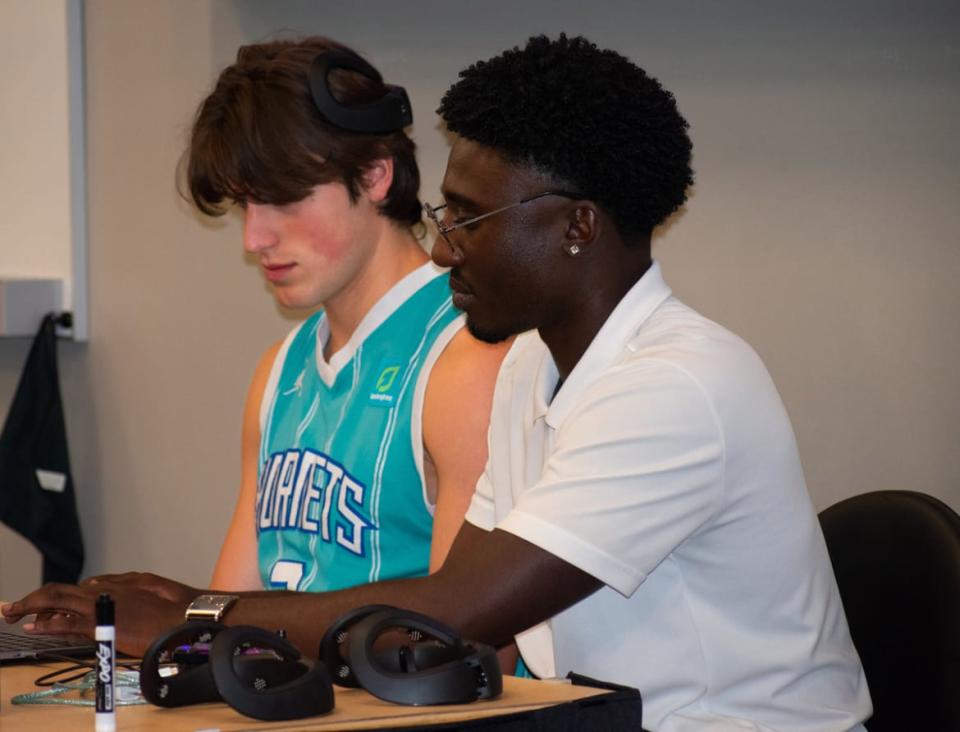You Can Control These Flying Racing Drones With Your Brain

With a burst of concentration, University of Alabama computer science major Jacob Boykin sent his small quadcopter drone speeding ahead of an identical drone operated by UA computer-science PhD student Roya Salehzadeh. It was a drone race along a 16-foot track, and after weeks of heats initially involving 20 competitors, Boykin was crowned the Brain-Drone Race 2023 champion.
Drone racing has existed for years and can trace its beginnings back to 2011 when a group of amateur drone hobbyists in Germany held the first official race. Today, there are leagues all over the world organizing competitions with prizes of $50,000 or more. Russian and Ukrainian troops have even turned speedy racing drones into crude cruise missiles by strapping explosives to them and sending them flying towards each other.
What was special about the April 1 race in Alabama, though, was that the contestants weren’t steering their drones the usual way with handheld controllers. Instead, they operated the drones with their thoughts. They weren’t racing for a cash prize or even bragging rights either. Well, not completely.
The April race, organized by UA computer scientist Chris Crawford, was an experiment to help advance an important new technology—brain-computer interfaces (BCIs)—while also introducing a new generation of budding scientists to the bleeding edges of computer science and neuroscience.

The key is what the eight racers were wearing: electroencephalography (EEG) headsets, which detect electrical activity in the brain. Doctors typically use them to diagnose epilepsy and sleep disorders. However, if you connect it to a radio transmitter and add the right software, an EEG headset can also double as a BCI—or a brain modem.
“These signals have the potential to revolutionize everyday life by enhancing our ability to interact with technology in a more natural and intuitive way,” Salehzadeh told The Daily Beast.
Brain modems aren’t exactly new. Scientists have been tinkering with them since the 1970s. Among other niche uses, they can connect amputees to their “smart” prostheses and give mute people computerized speech.
But despite a lot of hype from the tech sector (Elon Musk launched BCI startup Neuralink in 2016, and Facebook funded some BCI development between 2017 and 2021) brain modems still haven’t gone mainstream—and for good reason. The best brain modems have to be surgically implanted inside the user’s skull. The holy grail of the BCI field is a modem you can wear like a hat and still get a good read of your own thoughts.
That’s the kind of tech the racers were testing at UA last week. “The brain-drone race event is our way of taking BCI research outside of a controlled lab environment,” Crawford told The Daily Beast. “It provides a way for us to learn which components are robust.”
The race highlighted some big recent advancements in brain modems, but also underscored the huge obstacles the tech still faces on its way to everyday use as a way of interfacing with your car, smart home, computer or smartphone—or even silently communicating with another user, mind to mind.
The April race wasn’t actually Crawford’s first brain-drone contest. In 2019, he teamed up with University of Florida computer scientist Marvin Andujar for a joint Florida-Alabama race. Before that, Andujar had been running his own local races for three years. For four years, COVID interrupted what could have been an annual brain-drone race. But the long break also gave Crawford an opportunity to upgrade the tech.
“This year the team investigated the use of new hardware and software,” Crawford said.

Brain-Drone racers wear electroencephalography (EEG) headsets, which detect electrical activity in the brain and sends it to the drone.
All the brain-drone races have involved wearable EEGs rather than the more-sensitive implanted modems. After all, what college kid wants to have a hole drilled in their head? But the races before this year’s involved a less sophisticated wearable system: A “passive” interface that’s just sensitive enough to gauge the overall level of neural activity under the skull. In other words, it can’t tell what you’re thinking. It can only tell how hard you’re thinking.
That intensity-only, passive EEG afforded racers just one “degree of freedom,” or type of command. This means that, a user can relay just a single general direction to a drone or other device.
“You can think of a degree of freedom as a dimension of independent control, like moving a joystick in one axis,” Graeme Moffat, a scientist in the neurotechnology industry, told The Daily Beast. “Forward/backward is one degree of freedom. Left/right is one degree of freedom.”
In the case of the pre-2023 brain-drone competitors, the command was “go faster” or “go slower.” Think hard and generate lots of brain waves, and the drone takes that to mean “speed up.” Think less hard, generate fewer brain waves, and the drone slows down. All that is to say, in the previous brain-drone races, the drones could only travel forward at varying speeds.

Besides being a fun competition, the Brain-Drone Race are helping develop new approaches to BCI technology like new signal-processing and better machine-learning algorithms.
For the 2023 race, Crawford fitted his racers with “active” interfaces that are sensitive enough to translate specific neural impulses into more degrees of freedom. The contestants could control their drones’ speed and direction. That made the contest a lot more interesting—and transformed the race into a combination of art and science.
“I found that the key to success was to remain relaxed and consistent in my imagination of hand movements,” Salehzadeh told The Daily Beast. “Once I learned to control my thoughts and visualize the movements clearly, I was able to use the EEG signals to control the drone with greater accuracy.”
However, it's still not perfect. More degrees of freedom are needed to "reliably control a robot in a useful way,” Moffat explained. Moreover, for brain modems to become true consumer tech, they’ll need potentially hundreds of them. Luckily, every experiment or trial—or yes, drone race—that helps add degrees of freedom gets us slightly closer to an everyday brain modem.
“The data that investigators can obtain are brain data and qualitative feedback from the competitors,” Anjudar told The Daily Beast.
But Crawford’s race has a parallel objective. The contestants’ experiences could inform effort to improve the control links between EEG headsets and drones, or write new algorithms for translating neural impulses into commands "But it's by and large a learning environment for students just starting out in BCI,” Moffat said.
After some recent setbacks, including Facebook cutting off BCI funding and regulators rejecting Neuralink’s request to start human trials, it’s becoming clear just how much work Crawford and Andujar and their fellow scientists still have to do to make the tech work for more people, and for different purposes. It might take years, or Decades even. So it’s possible one of the students commanding a drone with their mind at one of Crawford or Andujar’s races will be the one to finally make brain modems work for everyone.
Got a tip? Send it to The Daily Beast here
Get the Daily Beast's biggest scoops and scandals delivered right to your inbox. Sign up now.
Stay informed and gain unlimited access to the Daily Beast's unmatched reporting. Subscribe now.

